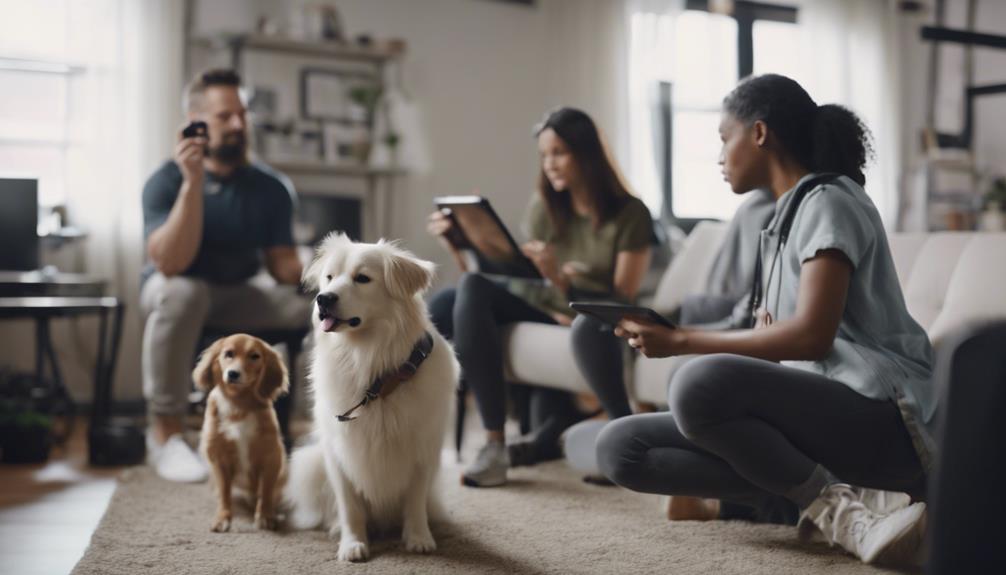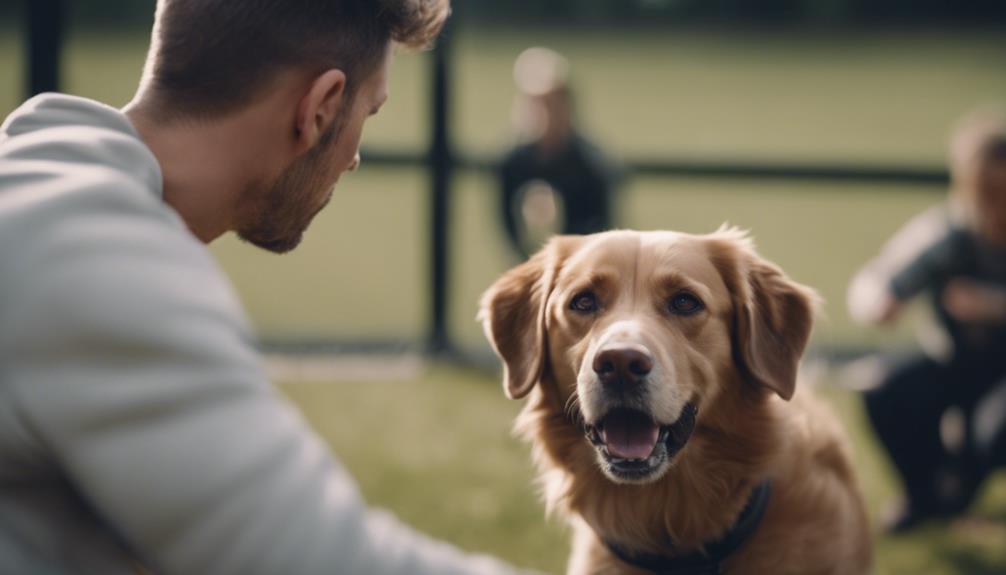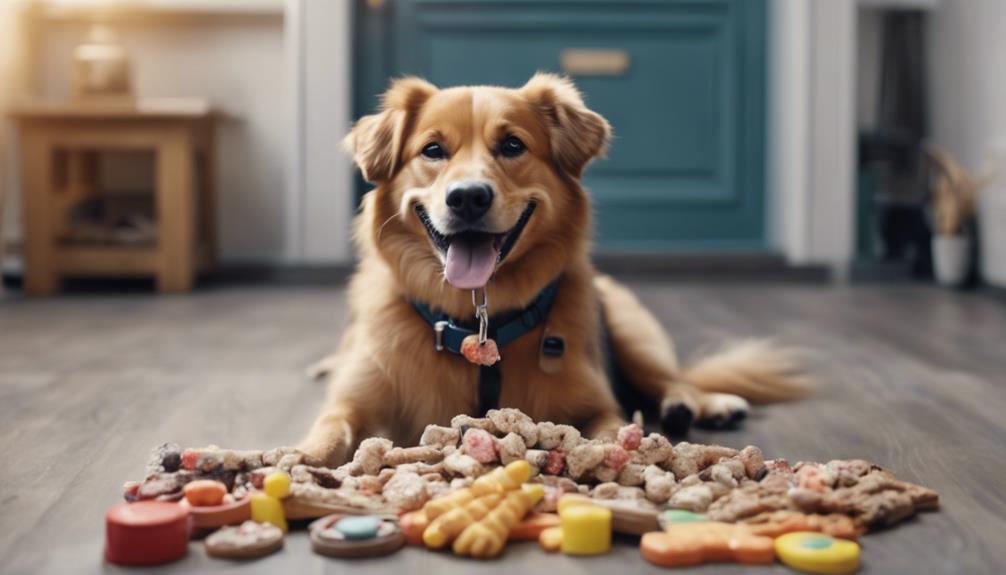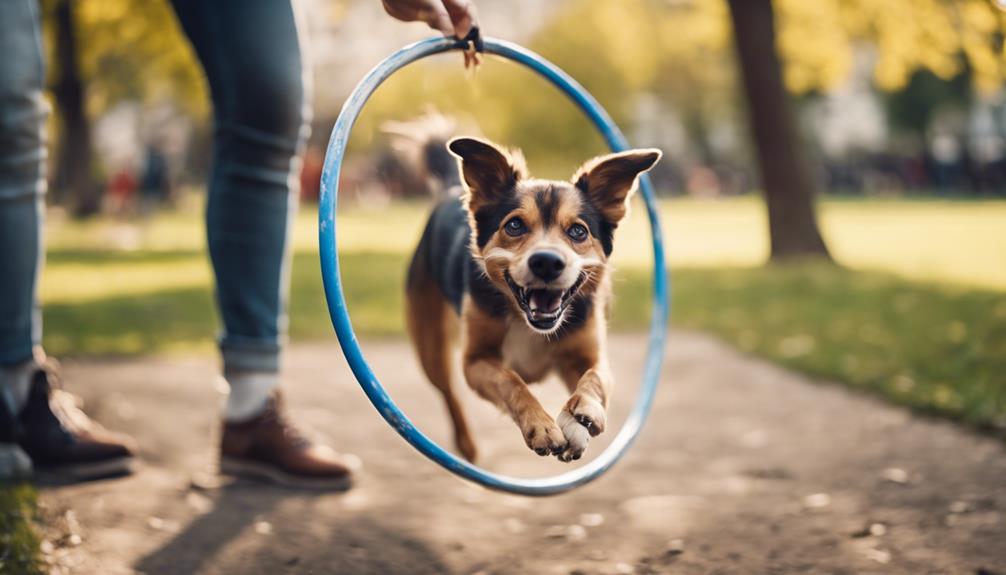Are you aware of the profound impact training can have on your dog's well-being and your relationship with them?
Starting this journey holds the key to unlocking a world of possibilities for both you and your furry companion.
By understanding the importance of training and how to begin, you can lay a solid foundation for a joyful and fulfilling partnership.
Key Takeaways
- Positive reinforcement training is crucial for effective dog training.
- Consistency and patience are key for successful training outcomes.
- Basic cues, safety commands, and advanced skills are essential in training.
- Training costs vary, but investing in proper training methods is beneficial for a strong bond with your pet.
Benefits of Positive Reinforcement Training
Utilizing positive reinforcement in dog training fosters a harmonious bond between you and your furry companion while effectively shaping desired behaviors. By rewarding your dog's good actions with treats, praise, or playtime, you encourage them to repeat those behaviors.
Positive reinforcement creates a positive learning environment where your dog feels motivated and eager to please you. This method helps build trust and strengthens your relationship with your pet. Unlike punishment-based techniques, positive reinforcement focuses on encouraging the behaviors you want to see, making learning enjoyable for your dog.
Through consistent use of positive reinforcement, you can teach your pet new skills, address behavior issues, and enhance communication, all while deepening the special connection you share.
Importance of Consistent Training Methods
Consistency in training methods is crucial for effectively communicating expectations to your dog and fostering desired behaviors. To ensure successful training outcomes, consider the following:
- Routine: Establish a consistent training schedule to create a sense of predictability for your dog.
- Clarity: Clearly define commands and use the same cues each time to avoid confusion.
- Rewards: Reward good behavior promptly and consistently to reinforce positive actions.
Understanding Training Costs and Options

To make informed decisions about training your dog, understanding the costs and options available is essential. Training costs can vary depending on the level of personalized attention and the location of the training.
You have various options to choose from, including do-it-yourself methods using books, videos, or online resources. Public classes typically range from $100 to $200 for a 6-7 week session, while online classes may cost between $30 and $100 per hour. If you opt for private lessons with a trainer, be prepared to pay anywhere from $75 to $300 per hour.
Consider your budget and the level of support you desire when selecting a training program that fits your needs and goals.
Key Skills for Effective Dog Training
For effective dog training, mastering essential cues such as sit, stay, come, and leave it's crucial. When teaching your dog these key skills, remember to:
- Be Patient: Dogs learn at their own pace, so patience is essential to avoid frustration.
- Use Consistent Rewards: Consistency in rewarding desired behaviors helps reinforce learning and motivates your dog.
- Practice Regularly: Regular training sessions, even short ones, are more effective than long, sporadic sessions.
The Role of Patience in Training

Patience plays a crucial role in successful dog training, allowing for gradual learning and understanding. It is vital to remember that training takes time, and each dog learns at its own pace. Rushing the process can lead to confusion and setbacks. By staying patient, you create a positive environment for your dog to absorb information effectively. Remember, consistent repetition and reinforcement are key components of successful training. Celebrate the small victories along the way to keep both you and your furry companion motivated.
| Benefits of Patience | Explanation |
|---|---|
| Builds Trust | Establishes a strong bond |
| Promotes Confidence | Allows for comfortable learning |
| Reduces Stress | Creates a positive atmosphere |
| Enhances Communication | Ensures clear understanding |
Establishing Safety Commands Early On
Establish a foundation of safety and control by introducing essential commands early in your dog's training journey. To ensure a well-trained and secure environment for your canine companion, focus on the following key safety commands:
- Drop It: Teach your dog to release items from their mouth on command, preventing them from swallowing dangerous objects.
- Wait: Train your dog to pause and hold a position until given a release signal, enhancing impulse control and preventing accidents.
- Recall: Establish a reliable recall command to bring your dog back to you promptly, crucial for their safety in various situations, such as off-leash walks or emergencies.
Tips for Successful Training Sessions

To enhance your dog's training experience, prioritize short, engaging, and positive sessions using high-value rewards. Keep sessions around 5-10 minutes to maintain focus. Use treats or toys that excite your dog to reinforce good behavior effectively. Ensure a positive ending to leave your dog feeling accomplished. Be enthusiastic and encouraging during training to keep your dog motivated.
Clear communication through consistent cues helps avoid confusion. If your dog struggles with a certain command, break it down into smaller steps for easier learning. Adapt your approach based on your dog's responses to keep sessions productive. Remember, patience and positivity are key to successful training sessions.
The Impact of Training on Behavior
Training your dog using positive reinforcement techniques significantly influences their behavior and overall well-being. By consistently rewarding desired actions, you shape your furry friend into a well-mannered companion. Here's how training impacts your dog's behavior:
- Improved Obedience: They learn to respond promptly to your cues, fostering better communication.
- Enhanced Confidence: Positive reinforcement boosts their self-assurance and reduces anxiety.
- Stronger Bond: Training sessions strengthen the bond between you and your dog, creating a harmonious relationship based on trust and respect.
Incorporating Fun Into Training Activities

As you engage in training your dog using positive reinforcement techniques, infuse fun and excitement into the activities to keep your furry companion motivated and eager to learn. Incorporating play into training sessions can make learning enjoyable for your dog.
Use interactive toys, treats, and games to make training engaging. For example, you can play hide and seek with treats to reinforce the 'come' command or use a favorite toy for teaching new tricks. Keep the atmosphere light-hearted and upbeat to encourage participation.
Building a Strong Bond Through Training
Building a strong bond with your dog through training involves consistent positive interactions and mutual understanding. To strengthen this bond effectively, consider the following:
- Eye Contact: Maintain regular eye contact with your dog during training sessions to establish a connection and convey trust.
- Physical Touch: Incorporate gentle physical touch like petting or belly rubs as a form of positive reinforcement to enhance the bond.
- Verbal Praise: Use enthusiastic and encouraging words to show your dog appreciation and reinforce good behavior. This verbal affirmation helps deepen the bond between you and your furry companion.
Conclusion
In conclusion, training your dog using positive reinforcement is crucial for fostering a strong bond and promoting good behavior.
Consistency, patience, and the right skills are key to successful training sessions.
By incorporating fun activities and rewards, you can make the training process enjoyable for both you and your furry companion.
Investing time and effort into training won't only benefit your dog's obedience but also strengthen your relationship, leading to a happier and harmonious life together.




